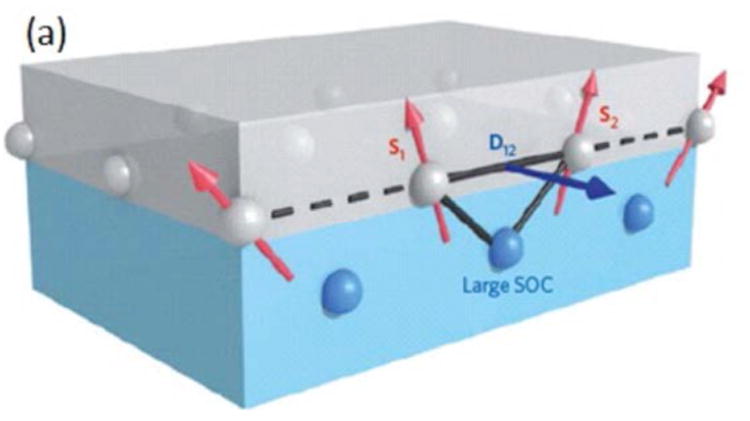Figure 3.

Schematic of the 3-site mechanism for generating an interfacial Dzyaloshinskii-Moriya interaction [Fert et al., 2013]. Spins S1 and S2 in the ferromagnetic (grey, upper) layer couple to each other through overlap of their wave functions with an atom with large spin-orbit coupling (blue, lower layer). This overlap gives rise to a contribution to the energy of the form D12(S1×S2), where D12 lies in the plane of the interface, in the direction normal to the plane defined by the three atoms. These qualitative properties are dictated by symmetry and identical to those predicted by more detailed non-local band models [e.g. Heinze et al., 2011; Dupé et al., 2014].
